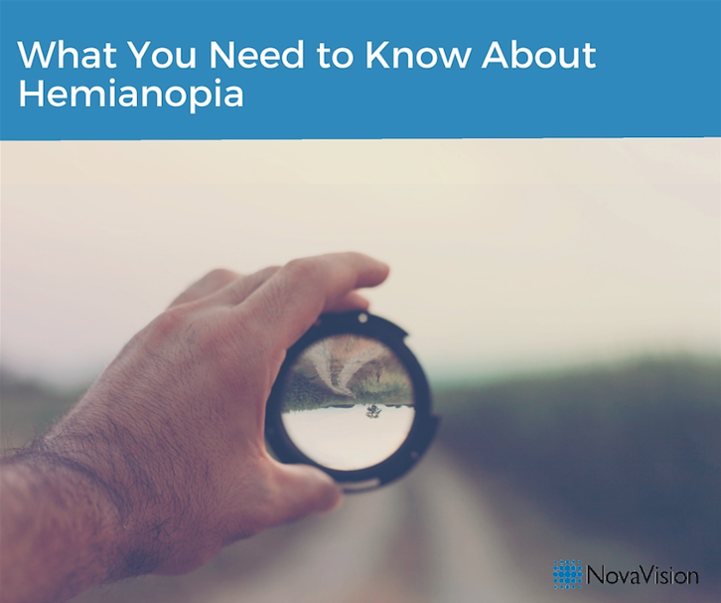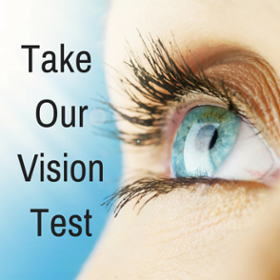 Hemianopia, also called hemianopsia, is a common type of vision loss after stroke or brain injury, and is defined as diminished vision or full vision loss in the left or right half of the visual field of one or both eyes.
Hemianopia, also called hemianopsia, is a common type of vision loss after stroke or brain injury, and is defined as diminished vision or full vision loss in the left or right half of the visual field of one or both eyes.
Types Of Hemianopia
 There are numerous types of hemianopia, each named depending on the region of the visual field that is affected, as well as the size of the affected area. Below is an overview of some of the most common vision problems affecting victims of stroke and brain injuries.
There are numerous types of hemianopia, each named depending on the region of the visual field that is affected, as well as the size of the affected area. Below is an overview of some of the most common vision problems affecting victims of stroke and brain injuries.
Homonymous Hemianopia / Hemianopsia
The most common type of hemianopia among survivors of stroke and brain injury is Homonymous Hemianopia, also called hemianopsia. Homonymous Hemianopia is defined as diminished vision or full vision loss in the left or right half of the visual field of both eyes.
Quadrantanopia (Quadrantanopsia)
 Homonymous quadrantanopia (or quadrantanopsia is characterized by low vision or vision loss in one quarter of the visual field of both eyes.
Homonymous quadrantanopia (or quadrantanopsia is characterized by low vision or vision loss in one quarter of the visual field of both eyes.
Less Common Types Of Visual Field Loss
- Vision loss in both Superior quandrants: the upper half of the field of vision in both eyes is affected
- Vision loss in both Inferior quandrants: the lower half of the field of vision in both eyes is affected
- Bitemporal hemianopia: both outer halves of the field of vision in each eye (incongruous) are affected
- Binasal hemianopia: both inner halves of the field of vision in each eye (incongruous) are affected
Understanding Homonymous Patterns of Vision Loss
Homonymous vision loss (present in both eyes) is a common sign of stroke and brain injury. The question is, why do hemianopia and quadrantanopia involve such distinctive patterns of vision loss?
The answer lies in the brain. When a stroke or brain injury patient experiences homonymous vision loss, it is a sign of brain, not damage to the eyes. In other words, vision loss occurs when the optic pathways to the brain are damaged during a stroke or brain injury. Because of how the brain’s visual system is wired, vision loss after a brain injury often occurs in homonymous portions of each eye’s visual field.
Hemianopia’s Impact On Daily Life
Patients suffering from hemianopia or quadrantanopia may run into objects, trip or fall, knock things over, lose their place when reading, or be surprised by people or objects that seem to appear suddenly out of nowhere. They may become afraid of venturing out in public, often because they easily get lost in crowded areas.
In addition, some hemianopia and quadrantanopia patients experience visual neglect; that is, they may be unaware that they cannot see to one side. They may orient their body to compensate, bump into objects on the affected side, or miss parts of words when reading. It is also common for those affected by hemianopia or quadrantanopia to believe that they have vision loss in only one eye.
A skilled clinician can effectively diagnose the type and extent of hemianopia or quadrantanopia, then plan a course of hemianopia rehabilitation.
Hemianopia And Quadrantanopia Rehabilitation
In some cases, hemianopia and quadrantanopia spontaneously resolve within the first three months after a stroke or brain injury. Traditionally, vision loss that remained after the period of spontaneous recovery was considered untreatable..
Vision Restoration Therapy uses special patterns of stimulation designed to help the brain heal itself beyond what has been accomplished during spontaneous recovery. This method of hemianopia rehabilitation may help regardless of how long ago the injury occurred.
Learn More About Hemianopia (Hemianopsia) And Its Rehabilitation
Learn about types of visual field deficits, how vision rehabilitation post stroke or brain injury works, and much more by visiting our website or by contacting our staff. Whether you are currently a patient or simply looking to learn more, we want to hear from you.



